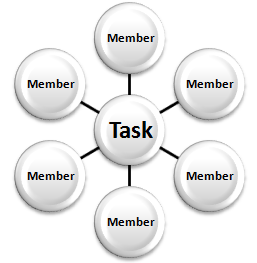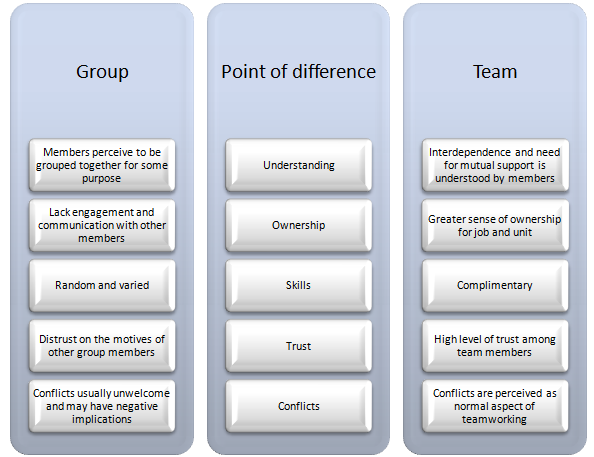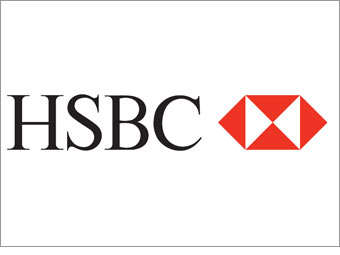Management

Goal setting, as an effective time management principle has been mentioned by Harris (2008), Boone and Kurtz (2010), and others. The importance of time management plan has been stressed by Harris (2008). Specifically, the author states that “when the management is not capable of drawing the correct time management plan, it may result to potential work related issues” (Harris, 2008, p.12). Pearson and Thomas (2010) consider goal setting as a compulsory condition of effective time management and praise the motivational aspects of this principle. According to Boone and Kurtz (2010) goals, aims and objective to be set by individuals has to meet the SMART principle, where the abbreviation stands for specific, measurable, achievable, relevant and time-bound. References Boone, LE & Kurtz, DL (2010) “Contemporary Business” John Wiley & Sons Harris, J. (2008) “Time Management 100 Success Secrets: The 100 Most Asked Questions on Skills, Tips, Training, Tools and Techniques for Effective Time Management” Lulu Publications Pearson, B. & Thomas, N. (2010) “The Shorter MBA: A Practical Approach to the Key Business Skills” Bell & Bain

Cooks (2008) defines social media as the types of software tools used by individuals in order to consume, convey, create and share content such as blogs, social networking, wikis etc. The literature review revealed a consensus among authors on the idea that during the last decade social media has evolved as an efficient means of communication for business and private purposes. Moreover, Morley and Parker (2010) observe increasing level of addiction to social media among individuals in general, and younger people in particular. Specific characteristics of social media as a communication tools include peripheral traits, facilitation of many-to-many communication, high level of transparency, and many potentials for the disruption of communication. It has been stated that “one of the benefits of using social media services as a communication interface is that a lot of people are already there; they know how to use the features and perhaps the threshold for participating in interaction with others is lower” (Zavoral, 2010, p.413). Additional benefits of using social media as a communication channel in workplaces have been found to include inexpensive or no associated costs (Ruesch and Bateson, 2008), ease of use (Thayer, 2009), possibility to limit visibility whenever necessary (Guffey et al., 2009), and social media serving as a content-sharing medium (Bronstein et al., 2010). According to Bronstein et al. (2010) the use of social media by businesses in general and large multinational corporations in particular is not limited to the facilitation of communication. Rather, social media in its various forms such as company Facebook page or YouTube clip is being valued by increasing numbers of businesses at a strategic level. Moreover, according to Eunson (2012) the introduction of a wide range of innovative social media sites and new platforms for online communication did little to compromise the role of traditional e-mails…

Communication can be effectively defined as “the management of the messages with the objective of creating meaning” (Samovar et al., 2011, p.9). Eight major structural components in communication have been specified by Giffey et al., (2009) as sender, message, channel, receiver, response, feedback, environment, and noise. The role of culture in communications has been stressed by Bronstein (2010), who defines culture as a set of common norms, values and accepted behaviours within the boundaries of a specific group. Specifically, the author convincingly argues that specifications of cultural background of an employee significantly impact the manner in which the employee sends, receives and perceives messages. In other words, content of the message, choice of communication channels and the nature of delivery of communication messages is heavily influenced by specific characteristics of cultural background of the individual who is delivering the communication message. According to concentric model of fields of communication introduced by Eunson (2012) different types of communication can be perceived in an interconnected and systematic way in the following manner: A concentric model of fields of communication Source: Eunson (2012) The model states that the different levels of communication can be interconnected in various ways. Specifically, the concentric model of fields of communication divides communication into six different levels and argues that the more levels of communication are utilised in any particular instance, the better the quality of communication would be. According to Ruesch and Batison (2008) the main barriers to communication include bias, noise, perception, closed-mindedness, and the level of personal stress. However, the main limitation of the article authored by Ruesch and Batison (2008) relates to the fact that the main barriers to communication have been only listed without reflection of the ways in which these barriers have negative implications. Some authors reason that “human communication is largely…

Businesses trading today, including multi-billion multinational corporations have commenced their operations as start-ups and have grown to their current sizes due to a range of reasons, including offering competitive products, and services, engaging in effective marketing exercising strong management etc. Comprehensive study of these success factors is important for new start-ups so that common mistakes can be avoided and chances for success maximised. This article represents a brief critical analysis of the reasons of success and failure of start-ups. The article starts with discussing the major reasons of success and failure for start-ups and this is followed by the illustration of real-life examples in order to justify the opinions. Reasons of success and failure for start-ups There is range of reasons that can make or break start-ups. The level of familiarity and experience of the owner in the relevant industry is a factor that plays a significant role in the future performance of a start-up. In other words, highly successful start-ups tend to have owners that have a high level of experience, and professional and personal interest in the business they are initiating. On the contrary, the majority of start-ups initiated on the basis of the personal interest alone, or for the sake of following a popular trend tend to face significant challenges in various aspects of the business due to the lack or even absence of founder’s experience and knowledge in a given industry. Competitive advantage associated with a business idea is another major factor affecting its success. Competitive advantage is defined by Khosrowpour (2007, p.108) as taken from Braun (2006) as “a condition that enables companies to operate in a more efficient or higher quality manner than the companies it competes with, which results in financial benefits”. Accordingly, start-ups that have stronger competitive edge are more likely…

There are three different types of teams: problem-solving teams, self-directed work teams, and functional teams. Problem-solving teams involve sharing ideas and suggestions amongst members to a great extend. This type of team is used “temporarily in order to bring knowledgeable employees together to tackle a specific problem” (Pride et al., 2011, p.296). Self-directed work teams, on the other hand, represent teams that have been assigned tasks coupled with authority and skills to manage themselves. Members belonging to such type of teams found to be highly motivated and satisfied due to increased level of task variety and control over the job. An alternative variation of team is a functional team that is formed from employees belonging more or less to the same hierarchal level but, employed in different departments of the company. The main advantage associated with this specific team format relates to the fact that employees from various organisational departments offer varying perspectives on the issue, so that problems can be resolved with an increased level of efficiency (Steers and Nardon, 2008). References Pride, W.M, Hughes, R.J & Kapoor, J.R. (2011) “Business”, 11th edition, Cengage Learning Steers, R.M. & Nardon, L. (2008). “Managing in the Global Economy”, ME Sharpe

Specific features need to be present within teams in order for the team to be able to achieve its objectives efficiently. ‘Integrated Model for Team Effectiveness’ framework proposed by Reis and Geller (2010) can be used in order to explore this issue with sufficient level of depth. The framework specifies eight most important features of effective teams in the following manner: Purpose. Effective teams understand, share and value team’s objectives Strategy. The ways of achieving team objectives are clear to each team member Team roles. The existence of all needed roles such as shaper, specialist, critic has been ensured within the team Work processes. Efficient operating procedures are put in place that effectively contribute to the achievement of team objectives Team processes. There is a great level of respect, understanding and trust amongst team members. Engagement. High level of team engagement is achieved through effective utilisation of motivational tools Feedback and metrics. Objective and timely information is communicated to team members regarding the team performance and their individual performances Stakeholders. Appropriate level of interaction between the team and key stakeholders is maintained. It is important to note that all team members do not need to possess the same set of personal traits, skills and competencies, rather variety within the team is welcomed to an extent that it produces a balanced outcome that would allow the achievement of team objectives efficiently. Nevertheless, there is a common set of skills and competencies to be possessed by each member of team regardless their role and function within the team. First of all, each team member needs to possess effective communication skills in order to be able to formulate their viewpoint in an appropriate manner, an adequate level of cross-cultural knowledge is also important for team members taking into account increasing forces of…
Different roles needed for the team can be explained through Belbin’s Team Roles Theory. Specifically Belbin (1993) divides roles within teams into the following nine categories: Plant is the one who is creative and can propose effective solutions to complex issues. However, this role may be associated with certain weaknesses such as such us ignoring incidents and remaining excessively preoccupied to focus on other important issues Resource investigators are the type of individuals who are extraverts with good communication skills, and thus it is easy for them to make contacts. However, these individuals need to be monitored due to their over-optimism, and tendency to lose interest and enthusiasm. Co-ordinators are confident and mature decision-makers who are good at delegation. Specific measures need to be provisioned so that co-ordinators are not perceived as manipulators. Shapers in teams are dynamic individuals who perform well under pressure. However, shapers need to be dealt with care due to their proneness to provocation and they also may offend the feelings of other people. Monitor/evaluators are valuable team members due to their strategic and detailed approach to issues. But this category of team members may not may great leaders because of the lack of drive and difficulties associated with inspiring others. Team-workers as co-operative and responsive employees make invaluable contribution to the achievement of team objectives. However, it has to be remembered that leaving team-workers alone in crisis or near crisis situations may result in negative consequences. Implementers are the ones who are highly efficient due to their discipline and reliability. Nevertheless, their occasional inflexibility and lack of speed in embracing new opportunities have to be compensated for by other team members Completer/finisher team members are needed to provide ‘final touch’ to projects and ensure their timely delivery. However, these types of employees have a set…

It has to be understood that successful performance of a team can be achieved only after a specific period of time required for the group members to get to know and accustomed to each-others personalities working styles etc. Tuckman Theory for developing teams offers an effective explanation of this matter in the following manner: Different stages of Tuckman Theory for developing teams During the forming stage team members are introduced to each-other and team aims and objectives are communicated to them. This is followed by the storming stage that can be described as “the time when team members begin to realise that the task is different or more difficult than they have imagined” (Hass, 2011, p.62), and interpersonal conflicts may arise in the team, therefore this stage can be specified as the most challenging part of the team formation process. The norming stage relates to time when formal and informal roles and responsibilities have been set and agreed within the team and the actual team performing process has commenced. Performing stage, as the most desirable stage from management viewpoint involves team members feeling positive and excited about the teamwork. Some teams also face adjourning stage, implying the end of the teamwork.

It is important to stress that “the group definition describes the individuals within it as having a common interest, while the team definition describes the members within it as striving for a common goal” (Carter, 2009, p.4). Moreover, there is an individual accountability for group members, whereas the level of accountability for team members can be individual, as well as, mutual. Also, groups and teams differ in terms of creativity in a way that in groups creativity may be suppressed due to distrust and lack of communication amongst group members, while in effective teams high level of creativity is achieved through synergy and communication (Schermerhorn, 2011). The following figure illustrates the main points of differences between teams and groups: References Carter, M. (2009) “Unique Team Enhancement: All About Team Building and How to Build a Great Team” Dorrance Publishing Schermerhorn, J.R. Jr. (2011) “Introduction to Management” 11th edition, John Wiley & Sons

Team building blocks can be explained as foundations for effective teambuilding. The following most essential team building blocks are going to contribute to the success of HSBC customer service team: Appropriate leadership. Effective leadership practices are in place in HSBC derived from strong leadership of HSBC Group CEO Stuart Gulliver. Clear goals and objectives. Team goals and objectives to be developed according to SMART principle, the abbreviation standing for specific, measurable, achievable, realistic, and time-bound (Courtis et al., 2006) is going to contribute to successful team operations. Effective operating procedures. The latest IT facilities have been integrated within HSBC customer services and these make team operating procedures more convenient. Developing individuals. The issues of developing individuals are approached effectively by HSBC management with specifically designed ‘learning pods’ within some branches and a range of relevant programs available. Openness and confrontation. HSBC organisational culture is associated with openness to new ideas and viewpoints (O’Donnell and Boyle, 2008) and this may have positive contribution on new customer services team performance. Regular review. Regular individual performance appraisals and group performance reviews conducted at HSBC is going to serve as one of the important customer services team building blocks References Courtis, J., Ratcliffe, E.B. & Allsop, D. (2006) “The Bluffer’s Guide to Management”, Oval Projects O’Donnell, O. & Boyle, R. (2008) “Understanding and Managing Organisational Culture” CPMR Discussion Paper
